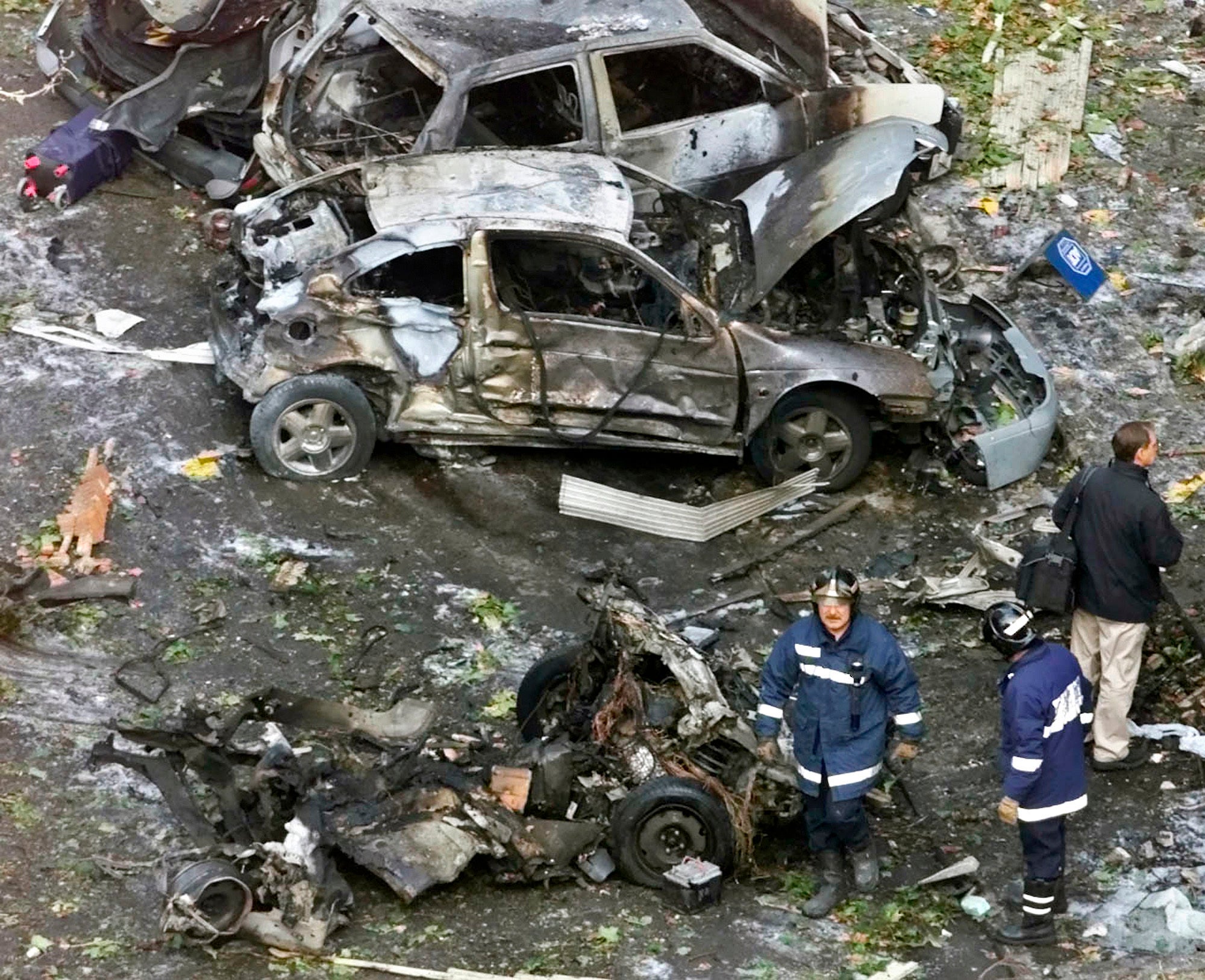ETA’s bloody history: 853 killings in 60 years of violence
The now-defunct Basque separatist militant group ETA was formed more than six decades ago to try to form an independent state in parts of northern Spain and southern France

Your support helps us to tell the story
From reproductive rights to climate change to Big Tech, The Independent is on the ground when the story is developing. Whether it's investigating the financials of Elon Musk's pro-Trump PAC or producing our latest documentary, 'The A Word', which shines a light on the American women fighting for reproductive rights, we know how important it is to parse out the facts from the messaging.
At such a critical moment in US history, we need reporters on the ground. Your donation allows us to keep sending journalists to speak to both sides of the story.
The Independent is trusted by Americans across the entire political spectrum. And unlike many other quality news outlets, we choose not to lock Americans out of our reporting and analysis with paywalls. We believe quality journalism should be available to everyone, paid for by those who can afford it.
Your support makes all the difference.The now-defunct Basque separatist militant group ETA was formed more than six decades ago to try to form an independent state in parts of northern Spain and southern France.
A former ETA leader, Josu Urrutikoetxea, is going on trial Monday in Paris on terrorism charges.
This is a timeline of key events relating to the group, which killed 853 people before it announced its dissolution in 2018:
— 1958: ETA is created during Gen. Francisco Franco’s dictatorship in Spain aiming to carve out an independent Basque state in northern Spain and southern France.
— 1968: In its first deadly attack, ETA kills civil guard officer José Pardines. His killer dies as a result of police gunfire.
— 1973: A powerful explosives planted by ETA in Madrid kills Prime Minister Luis Carrero Blanco, Franco’s right-hand man.
— 1975: Franco dies on Nov. 20.
— 1980: As Spain returns to democracy, ETA kills nearly 100 people, making 1980 the deadliest year in the group’s violent campaign.
— 1983: Members of Spain’s security forces establish Anti-Terrorist Liberation Groups, or GAL, to fight ETA and undermine its supporters. Over the following four years, GAL killed around 30 people.
— 1986: Twelve Civil Guard officers die in Madrid and 50 more people are wounded in a car bombing in Madrid blamed on ETA.
— 1987: In ETA’s bloodiest attack, bombs in the parking lot of a shopping center in Barcelona kill 21 people and injure 45 others. A separate attack at a Civil Guard barracks in Zaragoza kills 11 people, including five children and a teenager.
— 1989: ETA declares its first cease-fire and engages in peace talks in Algeria's capital with Spain's Socialist government. But the militant group breaks the truce by killing a Civil Guard officer. Central authorities begin the so-called dispersal policy that sends imprisoned militants to prisons scattered across Spain with the goal of weakening ETA’s support network.
— 1992: The militant group suffers a major blow with the arrest of most of its leaders in southern France.
— 1996: Francisco Tomás y Valiente, former president of Spain’s Constitutional Court, is shot and killed at the Autonomous University of Madrid.
— 1997: José Ortega Lara, a Spanish prison worker, regains freedom after 532 days of kidnapping, the longest in ETA’s history. Shortly after, the organization kidnaps Miguel Ángel Blanco, a young conservative councilor in the town of Ermua, and kills him after the government refuses to meet the 48-hour deadline for transferring all ETA militants in custody to prisons in the Basque region. The widespread protests in the wake of Blanco’s killing are considered a tipping point in the opposition to ETA.
— 1998: A new ETA truce before a regional election ends the following year after a failed dialogue with the conservative government of José María Aznar.
— 2000: An ETA cell shoots and kills former Socialist Health Minister Ernest Lluch in Barcelona.
— 2002: Urrutikoetxea goes into hiding after Spain’s Supreme Court summons him for his alleged involvement in the 1987 bomb attack in Zaragoza.
— 2005-2006: Urrutikoetxea is one of the negotiators meeting with Spanish government envoys for talks to try to end the group’s activities. A third cease-fire is declared while Basque politicians hold secret peace negotiations involving the future of imprisoned Basque militants. ETA breaks the truce with a car bombing at a parking garage at Madrid's international airport, killing two Ecuadorian citizens.
— 2010: A French police officer, Jean-Serge Nérin, is shot dead near Paris by militants fleeing after a car robbery, becoming ETA’s last fatal victim.
— 2011: An international peace conference in San Sebastian calls for ETA to declare a categorical end to its armed activities. On Oct. 20, the group declares the “definitive end” to armed conflict. Spanish officials say ETA is believed to have fewer than 50 members.
— 2017: ETA declares itself officially disarmed after handing over to French authorities dozens of weapons, ammunition and explosives. Spanish authorities demand that ETA disbands.
— 2018: In a letter to a Spanish newspaper published on May 2, ETA says it has “dissolved all its structures.” In a recording released on May 3, Urrutikoetxea's voice is identified as one of the two ETA members who read a statement announcing the group’s dismantling. The announcement comes less than two weeks after the group offered an unprecedented apology that victims, their relatives, the Spanish and Basque governments say was too late and insincere.
— 2019: Urrutikoetxea is arrested in Sallanches, a town in the eastern French Alps.